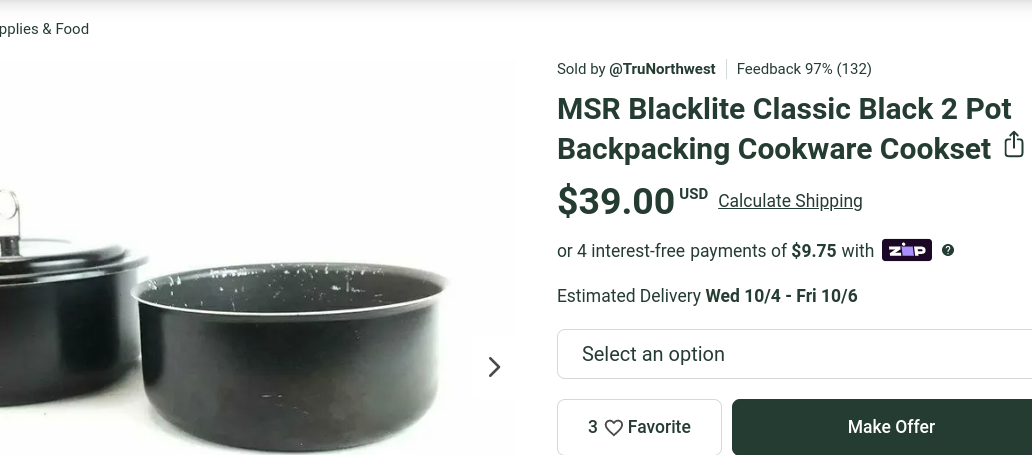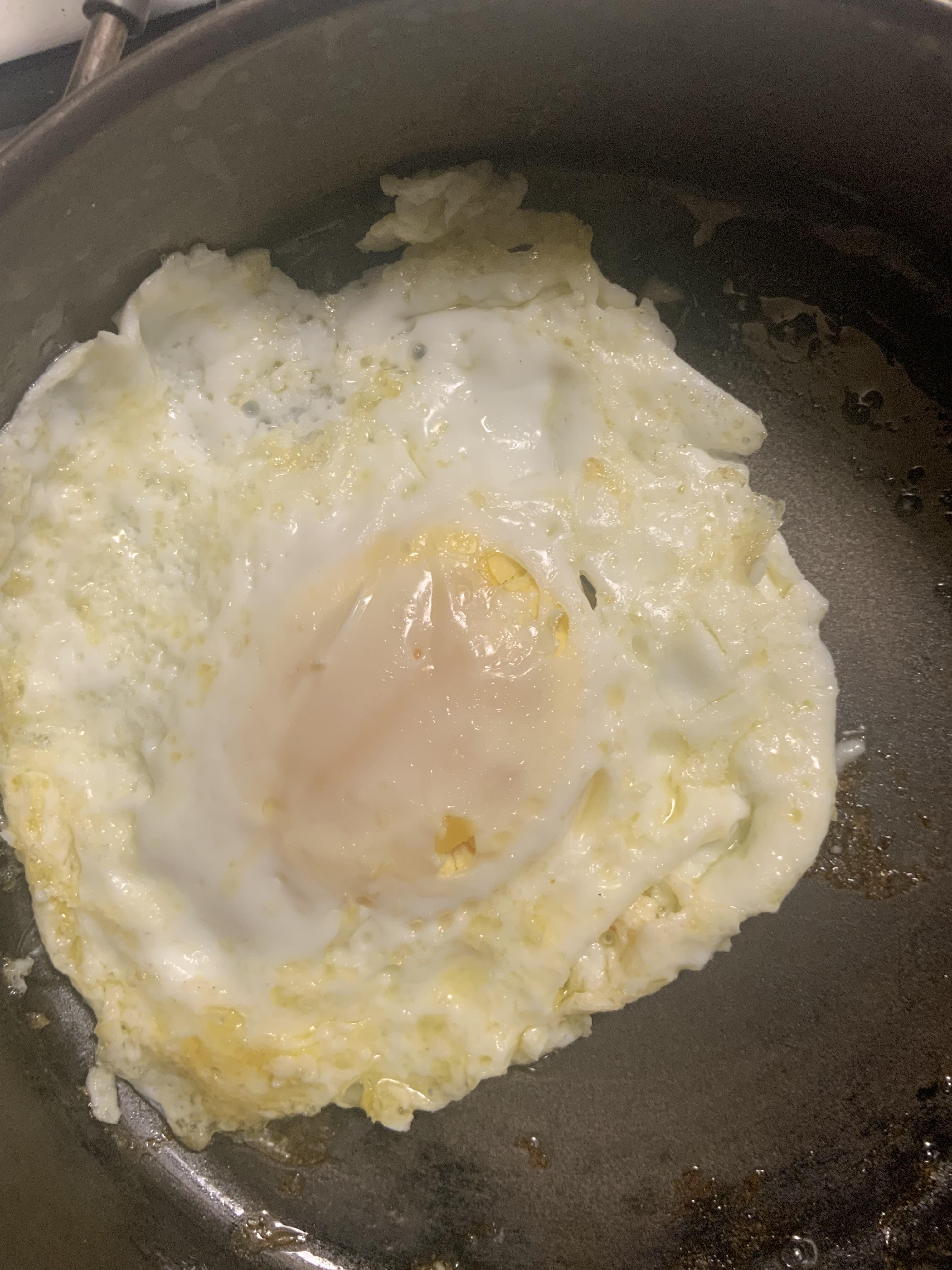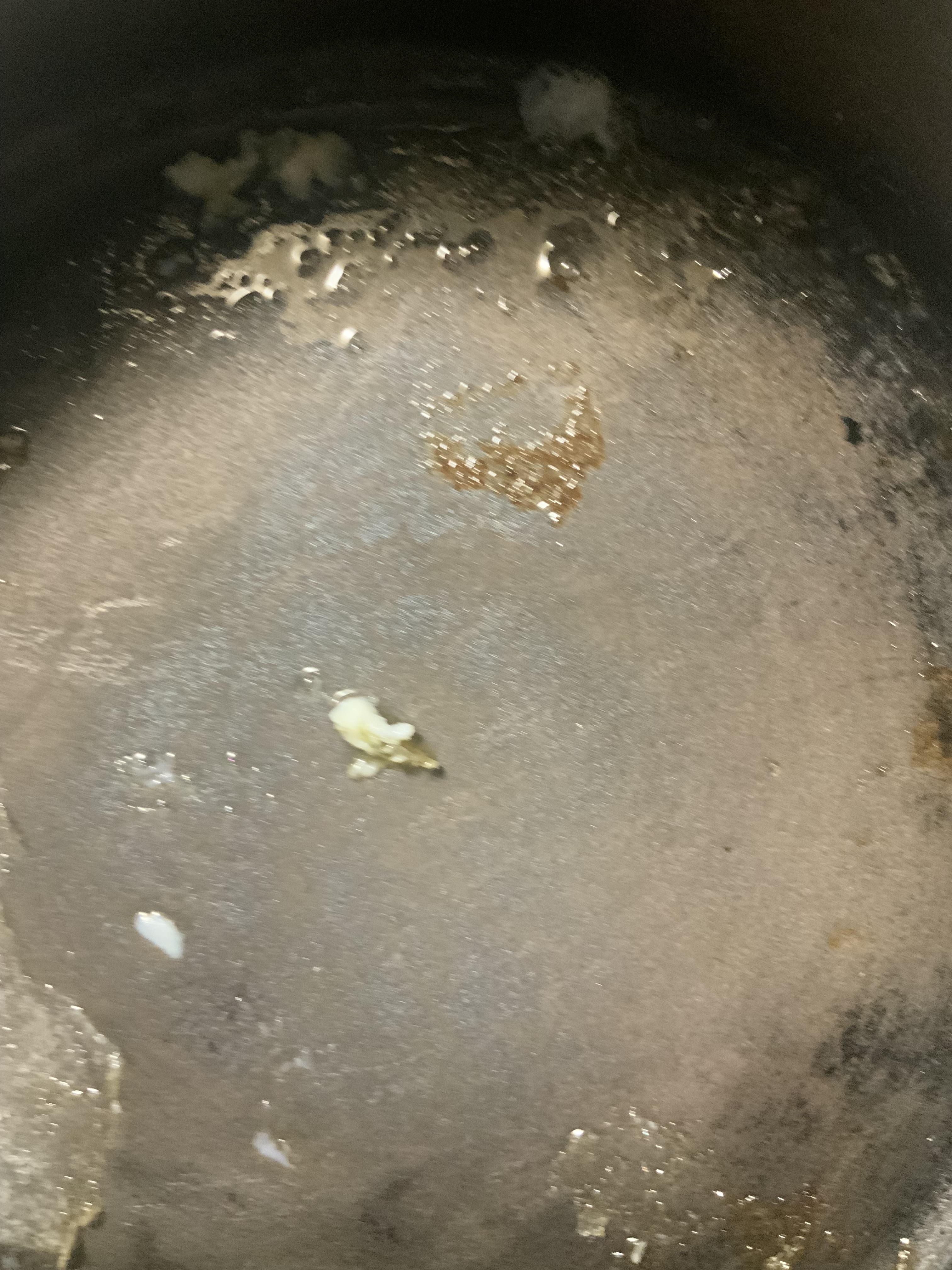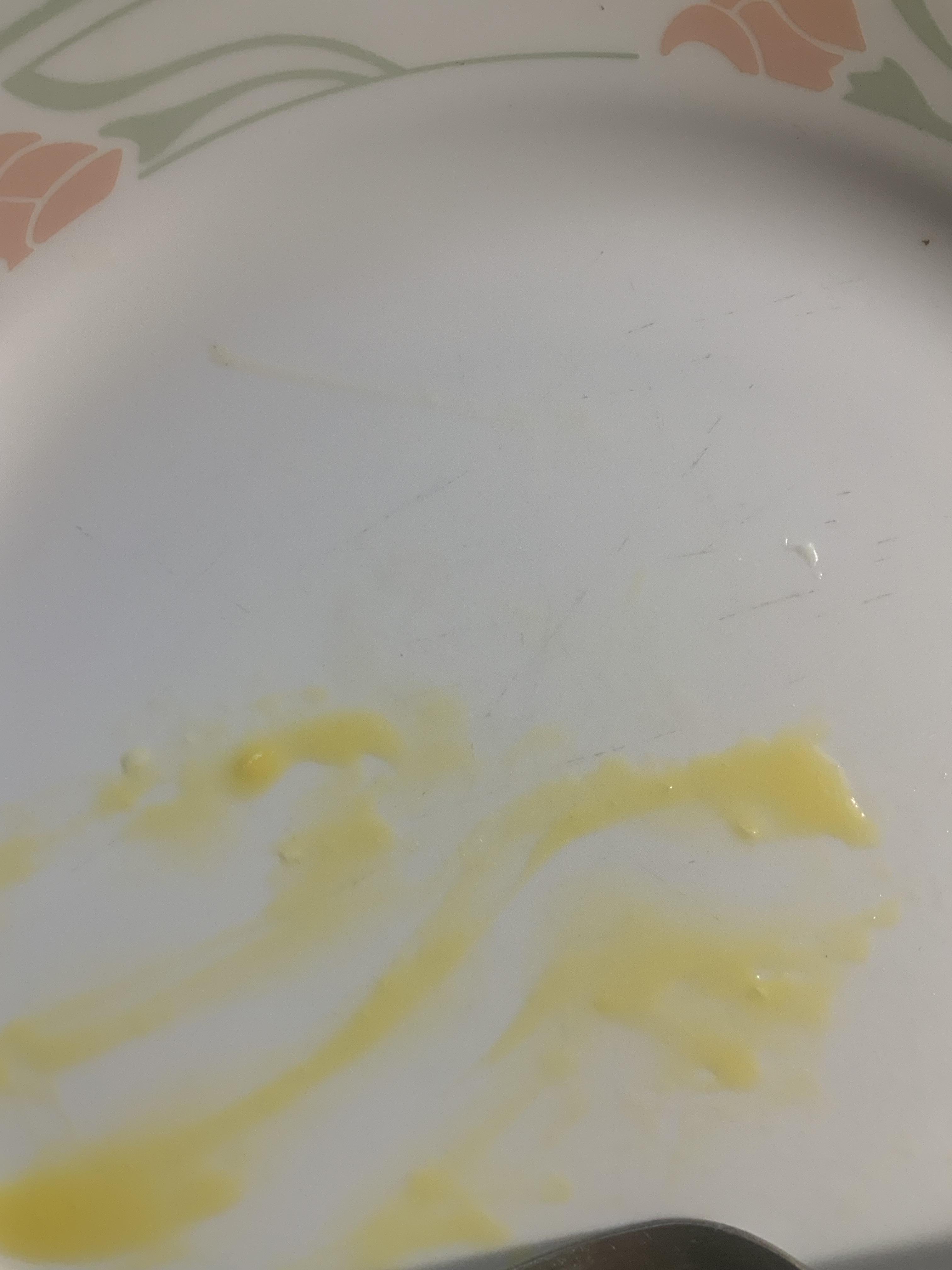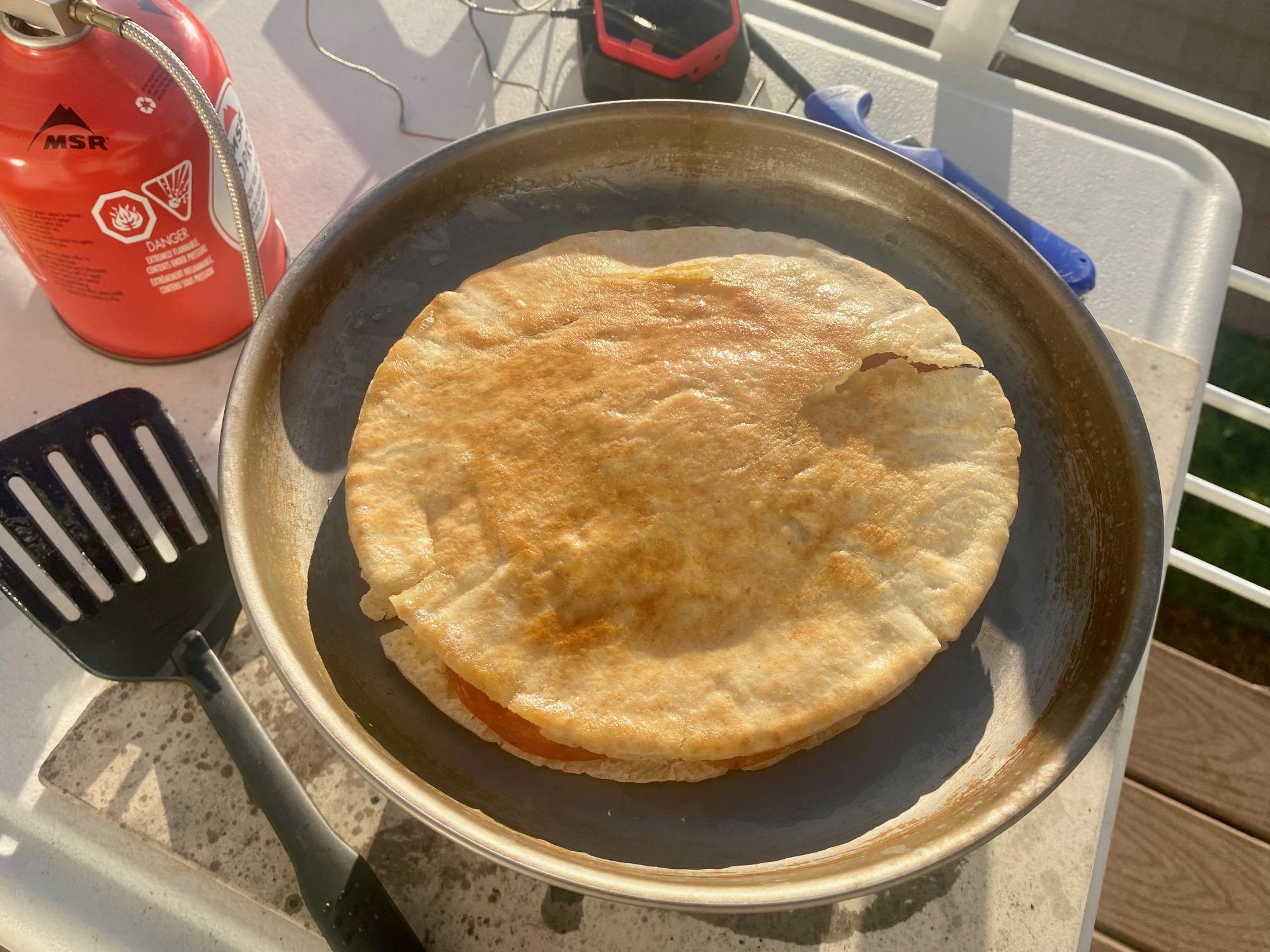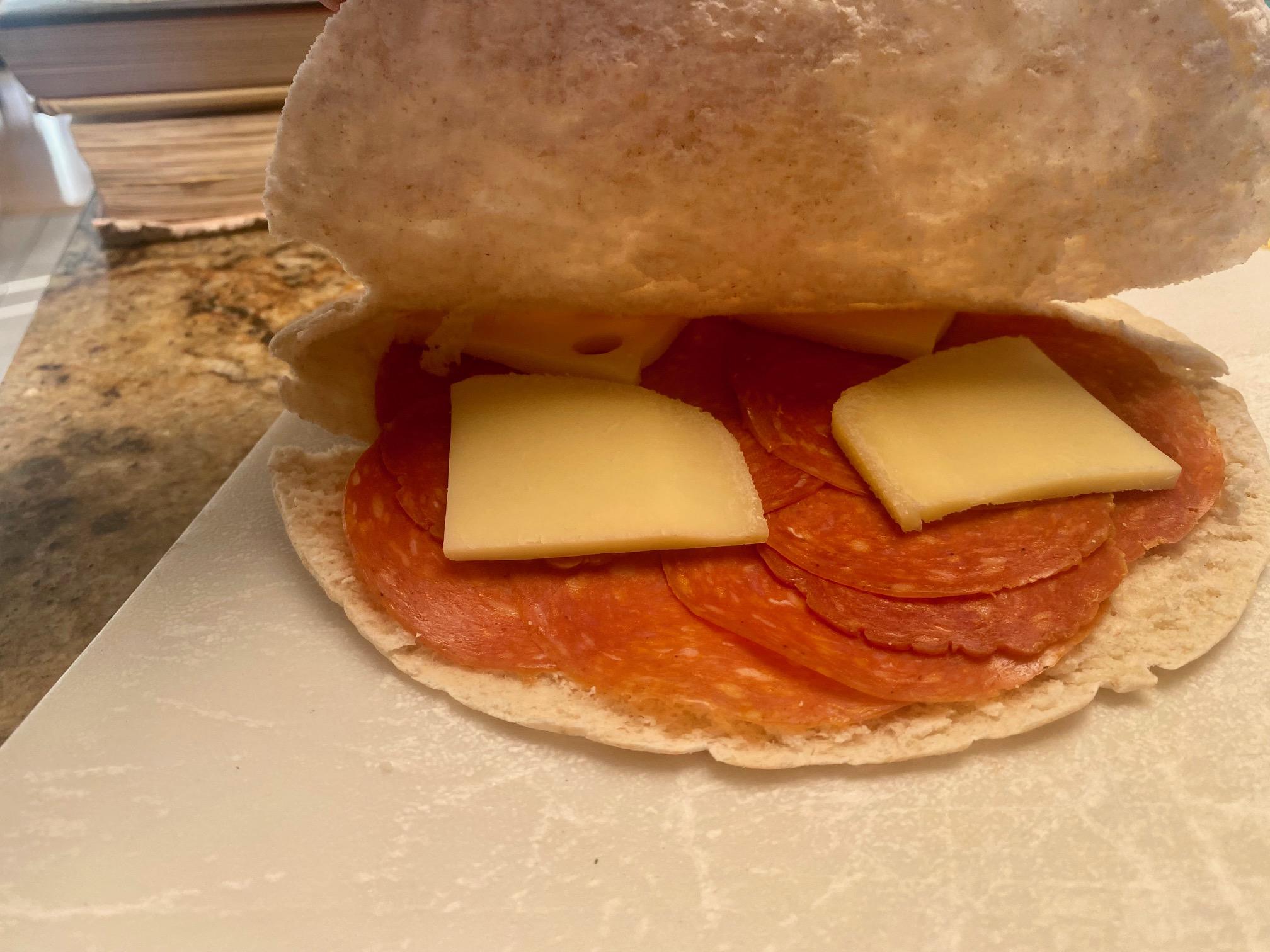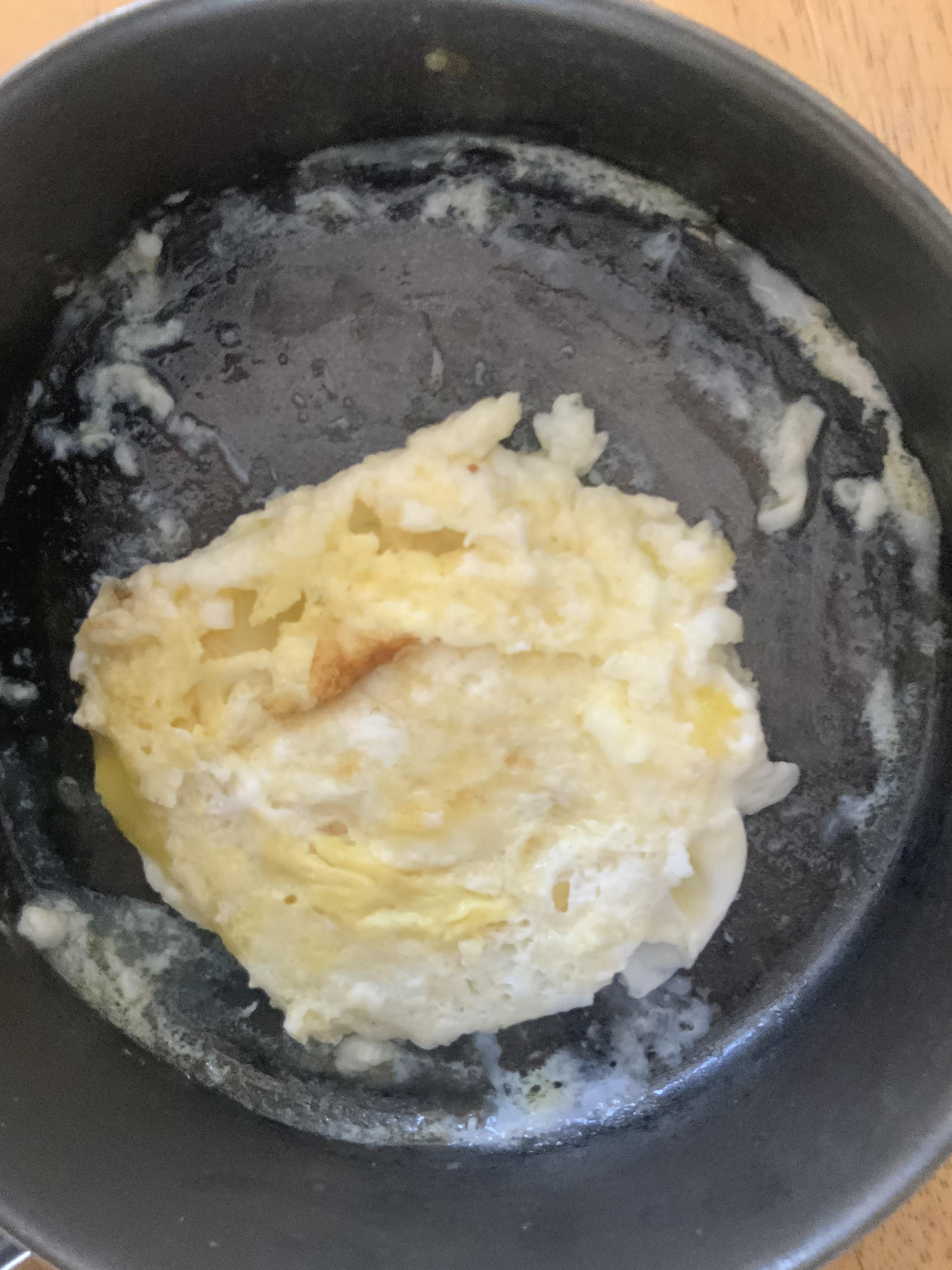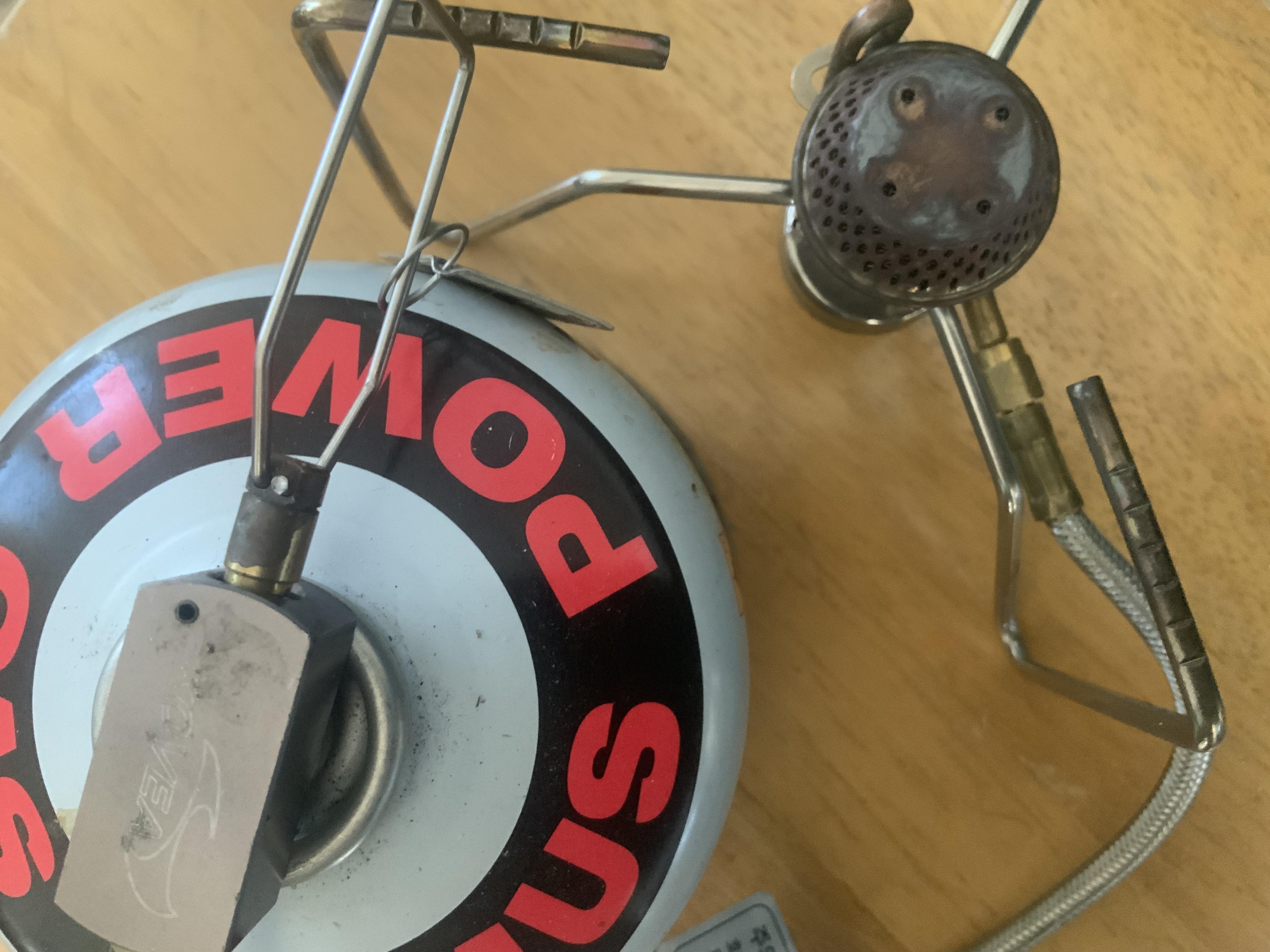Topic
Frying with Titanium, cracking the code
Forum Posting
A Membership is required to post in the forums. Login or become a member to post in the member forums!
Home › Forums › Gear Forums › Gear (General) › Frying with Titanium, cracking the code
- This topic has 136 replies, 23 voices, and was last updated 1 year, 2 months ago by
 Terran Terran.
Terran Terran.
-
AuthorPosts
-
Sep 27, 2023 at 9:49 am #3790037
That’s a good point, Terran. I do omelets similarly, and they ARE easier than scrambled or over easy (at least for me). Plenty of fat and constant movement help.
There is also a little extra liquid in omelet “batter” (milk or water). That supposedly slows overheating of the eggs/yolks (water evaporates off at 100C, preventing most of it from getting hotter than that).
Dan: How many times are you going to post the same vid? It’s an OK vid, but my omelets are better. And mine don’t include the extra Teflon bits that Chef Pepin includes in his.
Sep 27, 2023 at 9:50 am #3790038Bill, I hear you as my experiences tell me that eggs whites are ok scrambled eggs are hard. But there doesn’t seem to be data out there that supports that. Meat? well, you essentially burn the stuck parts to free it up (fond). I think that it is still true that items like meat, eggs and cheese are more difficult to fry. My 2 cents.
BTW, the other sacrificial non-stick tool is rice paper. Look up Vietnamese Omelets. They cook rice paper over open coals and crack an egg on it to cook it. You can also wet rice paper and wrap fish up in it like a burrito to fry.
Sep 27, 2023 at 10:03 am #3790040Speaking of temperature, I sometimes make party-size omelets in a Teflon temperature-controlled skillet. It’s the easiest of all methods. I set the temperature for 180F/80C, which is fairly low temperature for pan cooking. I cook with the lid on which is almost like low-temperature baking.
The omelets come out perfect every time, even when made with a dozen or more eggs.
Sep 27, 2023 at 10:10 am #3790042Jon, yes, no data. Just a lot of seat-of-the-pants experiences; some better than others.
I want to try your parchment paper idea.
Also I might try scrambled or over-easy in the temperature-controlled skillet, just in case temperature could be a significant contributor.
Sep 27, 2023 at 11:07 am #3790043>FYI- I am pretty sure that you can use parchment paper to cook trout on an unseasoned titanium pan as a disposable non-stick surface
Jon, I’m sure it’ll work. We bake our fish at home on parchment paper in stoneware, so that next weeks cinnamon buns aren’t salmon buns
I use a hard anodized aluminum pot when hiking with my son for 2 person meals, the pocket rocket deluxe cook kit. Even with the good low heat regulating capabilities of the PRD stove, egg clean up is still a messy hassle, but at least its possible to not burn it.
I’ve given up on pan/pot cooking eggs though and moved to Ovaeasy eggs cooked in freezer bag meals. Great way to add protein, they taste good and cook through. “Egg drop whatever” with ramen is a favourite.
Looking forward to your new tricks!
Sep 27, 2023 at 11:31 am #3790045Rice Paper as a not stick surface
Here is a video about Vietnamese Pizza. Rice paper with eggs and other toppings cooked directly on a grill

Here, you wet the rice paper and wrap your food before pan frying. I’ve done this with just fish but not on a backpacking stove.
 Sep 27, 2023 at 12:10 pm #3790046
Sep 27, 2023 at 12:10 pm #3790046Dan: How many times are you going to post the same vid? It’s an OK vid, but my omelets are better. And mine don’t include the extra Teflon bits that Chef Pepin includes in his.
I teach by repetition. Sorry to have offended you.
Sep 27, 2023 at 12:16 pm #3790047Oh, no problem. The truth is that I read* every post you make, because you post some great stuff.
I’m sorry I mentioned it; it *is* a pretty good vid (except, you know, for the fork). Hope I didn’t offend you.
(*) I don’t always understand everything you post, but I do pay attention. :)
Sep 27, 2023 at 12:25 pm #3790048We have to adapt what we see and read to our own needs. Hike our own hikes etc. Crack the codes!!!
Sep 27, 2023 at 2:51 pm #3790065Won’t take long for the teflon coating to start chipping like what we see in this photo:
 Sep 27, 2023 at 6:43 pm #3790081
Sep 27, 2023 at 6:43 pm #3790081 Sep 27, 2023 at 6:47 pm #3790082
Sep 27, 2023 at 6:47 pm #3790082 Sep 27, 2023 at 6:48 pm #3790083
Sep 27, 2023 at 6:48 pm #3790083 Sep 27, 2023 at 7:46 pm #3790085
Sep 27, 2023 at 7:46 pm #3790085Terran that looks perfect.
I wish someone made a ti skillet and lid with a 1/8” aluminum disk bonded to the bottom of the pan.Sep 27, 2023 at 7:52 pm #3790086OK, What is your secret sauce? I have not had sucess yet cooking an egg over easy on titanium. What pan are you using? What stove are you using? I assumed that it is a well seasoned pan? I am currently using a Ti plate and it dawned on me that the surface may be different than a Ti fry pan.
For Piney & Matt. Pita stuffed with pepperoni, Blue Cheese and Jarlsberg. Evenly toasted up on an unseasoned Ti plate. It only stuck where the cheese oozed out.

 Sep 27, 2023 at 7:54 pm #3790087
Sep 27, 2023 at 7:54 pm #3790087To cook on titanium you need a stove that has the ability to simmer and spread the heat evenly:
https://backpackinglight.com/forums/topic/alcohol-stove-with-simmer-ring-recommendations/
Sep 28, 2023 at 4:50 am #3790097I did it in the kitchen. Not over a roaring campfire or on my Spider. You may have to hold the pan to regulate the heat.
Evernew pan set using the pot as a lid.
Butter.The question was about titanium. It works fine. Thin pans are more difficult. Now the question is about stoves, though you can regulate anything by increasing distance. It’s just a matter of wanting to.
”The Spider is one of our best-selling stoves. It has an anti-flare tube for both safety and low temperature operation, and a wide powerful flame which can be controlled right down for light simmering.”
Sep 28, 2023 at 9:01 am #3790108Ken Larson,
Another fan of the Banks Frybake pan here! I just did 5 days on Isle Royale with my 11-year-old Grandson and his Dad (my son-in-law). Food was a MAJOR facet of this trip to keep my grandson enjoying the adventure. He’s not a big hiker, so we were doing 4-mile days. Temps were in the 80’s and as a “ginger”, he struggles with hiking in the heat. It seems to be a ginger thing. He had an amazing time swimming off the dock at two separate camps.
Anyways, our notable frying pan meals included:
- Warming bacon-jerky to add to 6″ chicken & swiss subs on day 1. Chicken was freeze dried Mtn House.
- Making chicken and provalone paninis. Browning both sides of the bread in the frying pan. Freeze dried chicken was used.
- Home-made pizza. I use the Fleischmann’s quick-rise pizza yeast, pepperoni, dehydrated pizza sauce, and string cheese.
- Pancakes using “complete” pancake mix. I used “GoToob” brand squeeze bottles to carry the maple syrup.
I’d love to hear about more frying pan recipes. When I’m traveling with all adults we usually stick to the lighter weight, freezer bag cooking style. It’s been interesting to do more gourmet trail cooking, even though my back appreciated it less.
Sep 28, 2023 at 9:29 am #3790110I broke the yoke cracking the egg. A little brown in the center due to the small burner. Kovea Spider. I had to move the pan around to heat it evenly. I could have avoided the brown spot. (No jokes) I do use butter. Not oil. Drop the egg in before the butter melts. Clean the pan out with a tortilla or a piece of bread.

 Sep 28, 2023 at 10:45 am #3790115
Sep 28, 2023 at 10:45 am #3790115OK, I think that I am coming to a preliminary conclusion, and I am leaning towards using a thin-walled aluminum pan. Here is the gist of it all, the upper end temperature range of a Teflon or Ceramic coating it 500 F. The Maillard reaction “is many small, simultaneous chemical reactions that occur when proteins and sugars in and on your food are transformed by heat, producing new flavors, aromas, and colors.” This is when cooked foods start to brown and create a crust (pancakes) and that occurs starting at 300 F. If you do not care about browning, then you can always steam your food. In reality, you probably want to reach about 325 F to 350 F. On the low end, that gives you a 150 F range.
My test setup is to have the pan sitting on top of a windscreen and I am using the Kovea Spider remote stove. The pan sits 1.5” above the burner head. I measured the steady state temperature at the center and towards the edge of the pan [example 300 F / 250 F].
Regular 7” fry pan 300 F / 250 F [Control: note 15 oz]
MSR Quick Skillet 300 F / 220 F [pan by itself is 5.5 oz]
MSR Quick Skillet 300 F / 260 F [Simple diffuser}
MSR Quick Skillet 300 F / 275 F [ prototype frying plate]What does this mean? A regular pan seems to work well, however; the MSR Quick Skillet is 1/3 the weight. If you look at the MSR Quick Skillet by itself the temperature differential is 80 F. What is the impact? Let’s say that you want to cook a pancake that is evenly brown (as possible) across the surface. Originally, the pan range was 150 F and due to the pan differential, that range is reduced by 80 F so the working range is 70F. Unless you carry a thermometer, you can only estimate the pan temperature. If you use a simple diffuser (a can lid can work), you reach the same temperature as the regular fry pan.
While you probably don’t bring a thermometer, you can bring some oil. It is possible to use the smoke point to provide an indicator of the upper end temperature. For example, refined peanut oil has a smoke point of 450 F so that could give you a 50 F margin to protect the non-stick coating.
Titanium. The temperature differential is significantly larger than aluminum. For even heating, the prototype Frying Plate works well to even the heat distribution. Of note, two things need to be understood. First, fuel consumption is significantly higher. I did not take detailed notes on fuel usage, but I would expect a 30% to 50% increase in fuel usage over using an aluminum pan. Secondly, an additional heat deflector is required between the burner head and the fuel line. The prototype Frying Plate is a stack of 2 diffuser plates and the bottom plate will reach temperatures over 1000 F. The convective / radiant heat increases the temperature inside the windscreen to several hundred degrees. The heat deflector will keep the temperature in the 205 F to 300 F range.
Care and maintenance of titanium pans have a steep learning curve, on par or more than using a stainless-steel pan. Seasoning is tricky and the care for the surface seems to be on par with coated surfaces. In addition, there doesn’t seem to be a significant weight advantage over an aluminum pan. The biggest advantage is if you have the skills, you can achieve good results and the titanium fry pan will last forever. So in conclusion, the code can be cracked. The overhead is higher than using a non-stick aluminum pan. My 2 cents.Sep 28, 2023 at 1:33 pm #3790128A tri ply steel pan with an aluminum core and a titanium ceramic finish.
Oct 1, 2023 at 10:16 am #3790262Seems like the Trangia Duossal frypans might be interesting. The T27 is 7.2” diameter (comparable to the MSR) and 5.3oz, excluding lid and pot gripper.
There’s a larger version and saucepans, too.
What makes them interesting is that the pan is aluminum for even heating — one of the conclusions of this thread — with a very thin bonded steel cooking surface for durability. I’ve fried eggs in mine, and it’s nice to have zero worries about using a metal flipper or scrubbing to clean.
Oct 1, 2023 at 10:34 am #3790270Does a thin pan on a small burner heat evenly? I don’t think it makes much difference. There’s no thickness to distribute the heat.
Oct 1, 2023 at 1:25 pm #3790285OK, so I made some headway here. I had a theory that surface finish of the titanium would impact the stickiness of titanium. I had been using a cheap titanium plate, which probably does not work as well as an Evernew fry pan. I sanded the surface of the plate with an orbital sander starting at 180 grit and slowly worked my way up to 2000 grit and followed that by buffing the surface. I was able to cook an egg over easy with just a bit of sticking. It is still not nearly as good as a new Teflon coated pan but it seemed to work. Is it worthwhile? Probably not. One skilled in the art can make a titanium pan work. I don’t see this as being true for the average light weight backpacker.
A Teflon coated aluminum pan weighs about the same as a titanium pan with a lot less hassle, however; has a shorter lifespan.
Aluminum helps to spread the heat out and a simple diffuser will help. A Titanium requires a special type of diffuser as well as a heat shield to create an even temperature. That and the fuel consumption is higher.
I can solve the even heat issue, I don’t think that I can solve the sticking problem to a level that is near that of a teflon coated pan (80%). My 2 cents.
Oct 1, 2023 at 4:56 pm #3790296Interesting experiment, Jon. My experience matches yours in that Teflon on aluminum is easier.
The downside is that Teflon doesn’t last forever. It eventually must be replaced and we wind up eating some of it. Then the rest pollutes the Earth forever.
IME, expensive pans don’t last longer than cheap pans
One approach is to buy cheap pans and replace them periodically.
But your buffing technique is a good alternative for someone who wants a more durable solution.
-
AuthorPosts
- You must be logged in to reply to this topic.
Forum Posting
A Membership is required to post in the forums. Login or become a member to post in the member forums!
Our Community Posts are Moderated
Backpacking Light community posts are moderated and here to foster helpful and positive discussions about lightweight backpacking. Please be mindful of our values and boundaries and review our Community Guidelines prior to posting.
Get the Newsletter
Gear Research & Discovery Tools
- Browse our curated Gear Shop
- See the latest Gear Deals and Sales
- Our Recommendations
- Search for Gear on Sale with the Gear Finder
- Used Gear Swap
- Member Gear Reviews and BPL Gear Review Articles
- Browse by Gear Type or Brand.



